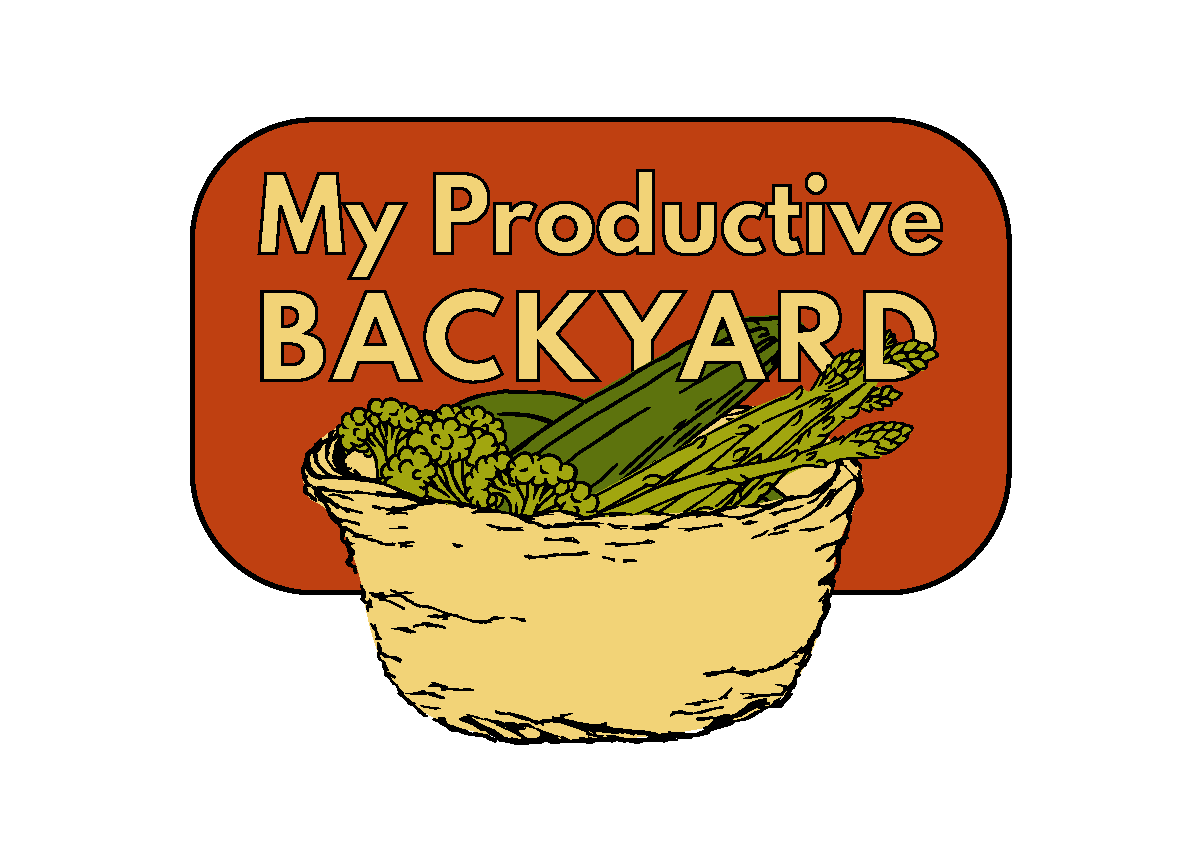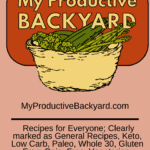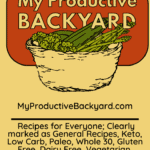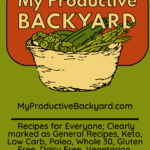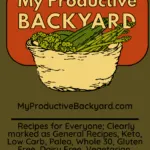My Productive Backyard; Recipes for Everyone; Clearly marked as General Recipes, Keto, Low Carb, Paleo, Whole 30, Mediterranean, Gluten Free, Dairy Free, Vegetarian, Pescatarian, Vegan, High Protein, Egg Free, Corn Free, Nut Free, Soy Free, Low Sodium and Low Fat.
Since My Productive Backyard is for everyone, I have recipes labeled and those labels are defined here.
Defining the Diet Recipe Labels:
I have attempted to define each of the diets I have tagged on the website below. I did that both so you know the guidelines I used when labeling them and also as a help possibly if anyone was wondering about a certain diet or contemplating trying one.
Also included just under the heading is a link to a Healthline article with much more information about each diet. That website is much more knowledgeable than I am with writers in the medical field so look there if you would like more information.
***All foods allowed and foods to avoid lists are taken from Healthline website; links are just below each diet title with more information on each. They also have a sample one week meal plan.***
***Click on each Diet title to go to the collection of all recipes on the blog for that diet.
General
This one doesn’t have a Healthline link but I do have many that are labeled as simply “General”. These are the regular old recipes that probably have gluten, dairy, etc. in them; ones that we used to eat before we had a dozen choices of different diets to choose from. This website is for everyone so we have “General” recipes too.
Keto
Healthline explains Ketogenic Diet
Keto is short for the Ketogenic diet. It is when carbs are extremely reduced and replaced by fat, which puts the body in a state of ketosis. Ketosis is a metabolic state in which the body uses fat for fuel instead of carbs. Usually, people aim for less than 20 net carbs per day to maintain ketosis.
Recipes on this site up to 7 net grams of carbs per serving will be labeled as Keto. That is a good general guideline to eat 3 meals a day and keep at or under 20 net grams of carbs per day. You can always adjust for your personal needs if needed.
Foods allowed; meats, fatty fish, eggs, butter and cream, cheese, nuts and seeds, healthy oils, avocados, low carb vegetables, salt, pepper, herbs and spices.
Foods to avoid; sugary foods, grains or starches, fruit (except small portions of berries), beans or legumes, root vegetables and tubers, low fat or diet products, some condiments or sauces, unhealthy fats, alcohol, sugar free diet foods.
Low Carb
Healthline explains Low Carb Diet
Low Carb foods are the same as Keto above but will be a bit more lenient to include more fruits and maybe a few tubers, unrefined grains, legumes, dark chocolate or wine.
Low Carb could be defined up to 50 or even 100 carbs per day, depending on your personal needs and goals.
Recipes in the Low Carb section can be labeled as recipes up to 15 grams of carbs per serving.
Paleo
Healthline explains Paleo Diet
“The paleo diet is designed to resemble what human hunter-gatherer ancestors ate thousands of years ago.”
Foods allowed; meat and poultry, fish and seafood, eggs, fruits, vegetables, tubers, nuts and seeds and healthy fats and oils, salt and spices, tea and coffee. If you can afford it, it is best to choose grass fed and organic but if not, just go for the most unprocessed choices.
Foods to avoid; sugar and high-fructose corn syrup, grains, legumes, dairy (although some versions of Paleo do include full fat dairy like butter and cheese), some vegetable oils, trans fats, artificial sweeteners, highly processed foods.
Sensible indulgences—in small amounts; wine (quality red wine) and dark chocolate (70% or higher cocoa content)
Modified Paleo Diets: over time, the Paleo diet has evolved to include quality grass fed butter and gluten free grains like rice. So you may see recipes on this site labeled as Paleo that include these ingredients.
Whole 30
Healthline explains Whole 30 Diet
Whole 30 is very similar to Paleo but is only supposed to be for 30 days with foods added back into your diet slowly after the 30 days.
“In addition, the diet recommends that you avoid recreating your favorite baked goods, snacks or treats — even with Whole30-approved ingredients.
Thus, foods such as cauliflower pizza crust and paleo pancakes must be avoided.”
Foods allowed; meat and poultry, fish and seafood, eggs, fruits, vegetables, nuts and seeds and some fats.
Foods to avoid; all sugar and artificial sweeteners, all alcohol, pulses and legumes (except green beans, sugar snap peas and snow peas), soy, dairy (except clarified butter and ghee) and processed additives.
Mediterranean Diet
Healthline explains Mediterranean Diet
“The Mediterranean diet is based on the traditional foods that people used to eat in countries bordering the Mediterranean Sea, including France, Spain, Greece, and Italy.
Although there are no strict rules or regulations for the diet, it typically encourages fruits, vegetables, whole grains, legumes, nuts, seeds, and heart-healthy fats. Processed foods, added sugar, and refined grains should be restricted.”
Eat: vegetables, fruits, nuts, seeds, legumes, potatoes, whole grains, herbs, spices, fish, seafood, and extra virgin olive oil
In moderation: poultry, eggs, cheese, and yogurt
Eat rarely: red meat, sugar-sweetened beverages, added sugars, processed meat, refined grains, refined oils, and other highly processed foods
Vegetarian
Healthline explains Vegetarian Diet
A vegetarian diet basically involves doing without meat, fish and poultry.
There are different types of vegetarians; Lacto-ovo-vegetarian allows eggs and dairy products, Lacto-vegetarian allows dairy and Ovo-vegetarian allows eggs. (Lacto=dairy, Ovo=egg)
For the purpose of labeling on this website, a vegetarian recipe could include dairy and/or eggs. I’m sorry I don’t have space or labels to include all of the possible vegetarian options. If you are vegetarian and don’t eat eggs and dairy, please see the Vegan label. That should be what you are looking for.
I did label Pescatarian in their own section. See below.
Foods to eat; fruits, vegetables, grains, legumes, nuts, seeds, healthy fats, proteins.
Foods to avoid; meat, poultry, fish and shellfish, meat-based ingredients, eggs and dairy (unless you are lacto and/or ovo-vegetarian), other animal products.
Pescatarian
Healthline explains Pescatarian Diet
A pescatarian diet is a vegetarian diet that adds seafood, usually for the health benefits. See the food lists above and add in fish and shellfish.
Vegan
Healthline explains Vegan Diet
Foods allowed; tofu, tempeh, and seitan, legumes, nuts and nut butters, seeds, calcium fortified plant based milks and yogurts, algae, nutritional yeast, whole grains, cereals and pseudocereals, sprouted and fermented plant foods, fruits and vegetables.
Foods to avoid; all meat and poultry, fish and seafood, eggs, dairy, bee products and animal based ingredients.
Gluten Free
Healthline explains Gluten Free Diet
Basically, to be safe in a gluten free diet, it is best to eat single ingredient foods. Any packaged food could include ingredients that contain gluten unless it is labeled “Gluten Free”.
Avoid; wheat based foods like wheat bran, wheat flour, spelt, durum, kamut and semolina, barley, rye, triticale, malt and brewer’s yeast.
Dairy Free
Dairy is milk, cheese and butter so there will be no recipes with those ingredients having this label unless there is a substitution available.
Some recipes call for mayonnaise and that may be listed as dairy free since I always use Duke’s or Hellmann’s mayo. There is egg in those brands but no dairy.
Nut Free
We do have some recipes with nuts so have our nut free recipes clearly marked for you. If it is labeled as nut free, this also includes peanuts, even though they are a legume, as they are a common “nut” allergy. If you would like a peanut recipe, just type “peanut” or “peanut butter” in the search bar and they will be listed for you.
Egg Free
We also have plenty of egg free recipes and they are marked with their own label.
Soy Free
We aren’t personally big soy eaters so most of our recipes are soy free. They are labeled.
Corn Free
Corn is another major allergen and these recipes are labeled for you.
High Protein
While everyone’s protein needs are different, on this site, I will be labeling a recipe with 20 grams per serving as a high protein recipe.
Low Fat
Same as the high protein; there isn’t an exact “low fat” number but I will tag recipes with lower fat counts here. Generally, less than 3 grams of fat per serving will be counted as a low-fat recipe.
Low Sodium
Low Sodium will be defined as less than 140 mg of sodium per serving.
Quick Recipes
Quick Recipes are defined as recipes ready in 30 minutes or less.
Are you following My Productive Backyard on Pinterest? I have been working very hard making new boards I think you will love and am adding dozens of new pins daily from all of the popular low carb and Keto websites! Check them out HERE!
You can also follow me on my Facebook groups; my Low Carb and Keto group; Low Carb & Keto Recipes & Helpful Tips Group, my recipes for everyone group; Best Recipes You will Want to Make and my Homeschool group; Loving Homeschool. I am adding daily pictures, links and much more than I would on the blogs and it is a place for you to find support from others on the same journey as you are. Come and share with others, ask questions and learn!
